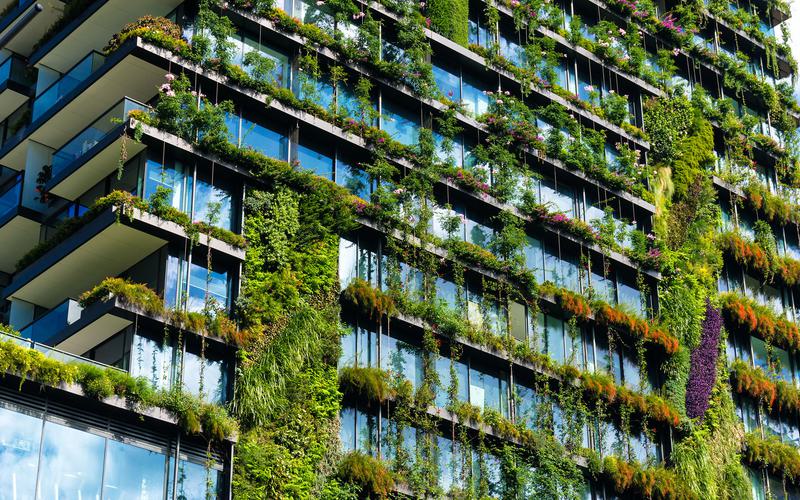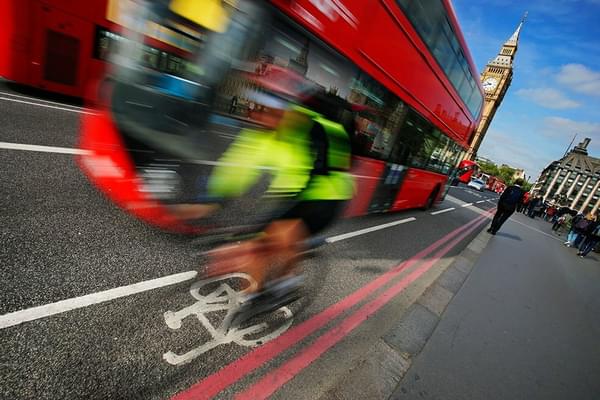Back to Articles
The vital link: How air quality drives thriving and sustainable communities
Lauren Massingham \ 15th Jun 2023
Ready to breathe in a fresh perspective on Clean Air Day? Our air quality guru, Lauren Massingham, makes a compelling case for why air quality must take centre stage in building vibrant and sustainable communities.
Air quality isn’t just important; it’s a game-changer. When we protect and improve air quality, it sets the stage for people, places and communities to truly thrive.
But why is air quality such a big deal? Brace yourself, because the facts might just be about to shock you.
Ambient (outdoor) air pollution is like a silent serial killer lurking all around us. In 2019 alone, it contributed to an estimated 4.2 million premature deaths worldwide[i]. Wrap your head around that number for a moment. As an air quality consultant, even I’m constantly surprised by the staggering impact.
When we breath polluted air, harmful pollutants get into our lungs, wreaking havoc on our health. But here’s the positive message: by reducing air pollution levels, countries can significantly reduce the burden of disease from stroke, heart disease, lung cancer, and respiratory diseases, including asthma. We’re talking about saving lives here!
Sources of air pollution include vehicle emissions, industrial processes and woodburning. This means that busy roads and cities, in particular, become hotspots for high pollutant levels, posing a serious risk to human health.
Vulnerable groups like children, the elderly, and individuals with existing health conditions are most at risk from the impacts of poor air quality. We have a collective responsibility to take action.
The role the World Health Organisation has on air quality targets
Let's talk about the World Health Organisation (WHO) and its role in setting air quality targets. WHO, an agency of the United Nations, is dedicated to promoting health and controlling communicable diseases. After fifteen long years, the agency stepped up and, in 2021, updated its air quality guidelines.
These guidelines are specific to different pollutants, defining maximum concentrations that should not be exceeded. According to WHO, breaching these guidelines would be considered hazardous to human health.
However, here's the catch: the UK isn't obligated to adopt these guidelines. Instead, we have our own Air Quality Objectives (AQOs) with comparable annual mean targets.
When you compare the WHO guidelines to the UK AQOs for key pollutants, the differences are striking. Take a look at this eye-opening table:

As the table shows, there are significant disparities between the WHO guidelines and the limits we adopt in the UK. Even the recently introduced PM2.5 target (January 2023) is double what WHO recommends.
However, it’s worth noting that we have Air Quality Management Areas (AQMAs) across the UK where our UK AQOs are exceeded. Therefore, meeting the substantially lower WHO recommended guidelines currently seems unrealistic, but we must strive for better.
Don't be fooled by what meets the eye! Air quality is often dismissed because, let's face it, unless pollution reaches critical levels, it remains invisible to our senses. But those tiny, harmful particles have a sneaky way of affecting us, even when we can't see them.
It's time to shatter the illusion of "out of sight, out of mind" and start paying more attention to the hidden dangers lurking in the air we breathe.
The facts around global air quality-related deaths alone prove it’s time to take this seriously.
The Clean Air Bill and Ella’s Law
The Clean Air Bill, also known as Ella's Law, is currently making headlines. This legislation is named after Ella Adoo-Kissi-Debrah, the first person in England to have air pollution listed as the cause of death.
Ella lived near London's South Circular Road and tragically died from an asthma attack aggravated by poor air pollution in February 2013.
Ella's Law aims to make clean air a Human Right. If passed, the Bill will require the Secretary of State to achieve clean air throughout England and Wales within five years of the Act passing, maintaining it thereafter. It will set minimum standards for air quality in workplaces, homes, and public spaces, while also promoting monitoring, new targets, measures, and annual reporting by local authorities. In other words: this legislation will have teeth!
The proposed changes also include measures to reduce vehicle pollution, promote active travel, raise public awareness, and impose restrictions on wood-burning stoves. It's a comprehensive approach to tackling the issue.
“Air quality isn’t just important; it’s a game-changer. When we protect and improve air quality, it sets the stage for people, places and communities to truly thrive.”
How we can promote air quality and long-term sustainable communities
So, how can we promote air quality and build long-term sustainable communities? Here's the deal: raising public awareness about air quality is crucial. We need people to understand its importance and the inherent dangers it poses to human life. When designing new homes, offices, schools, and other spaces, air quality should be at the forefront of our minds.
Ella's Law reinforces this importance by encouraging individuals to make small changes in their daily lives. Choosing sustainable transport options, taking walking routes away from main roads, and prioritising air quality in placemaking and community development are all steps in the right direction.
Together, we can achieve cleaner air and make those WHO guidelines, which signify safe concentrations, more attainable.

Air quality impact on biodiversity
Oh, and let's not forget the impact of air quality on biodiversity. Polluted air leads to eutrophication and acidification of ecosystems, resulting in loss of agricultural productivity, irreversible damage to our precious environments, and the decline of biodiversity. It affects our health, society, economy, and the environment as a whole. That's why, as an engineering design, energy, and sustainability consultancy, we take air quality seriously.
We strive to work on projects that not only demonstrate insignificant impacts on air quality but actually have a measurable positive impact.
Examples include a student residential development in Liverpool, which has been designed without car parking provision with the aim that 100% of student journeys to/from their place of learning are made by sustainable, non-car modes.
Similarly, we’re advising a residential development in Salford which, although proposing to include more than 500 apartments, has not included any car parking provision in the design of the scheme. Instead, the development is going to drive people to take advantage of the great active travel and sustainable transport modes already available in the city centre. Extending on this, the plans are actually targeting improving existing provision as part of the development, for example widening footpaths and providing access to more than 200 cycle spaces.
By prioritising people, health, and well-being early in the design process, whenever we have the chance to influence, we can make a real difference.
Let's continue leading the way in advancing air quality and building sustainable communities. Together, we can create a healthier and brighter future for everyone.












